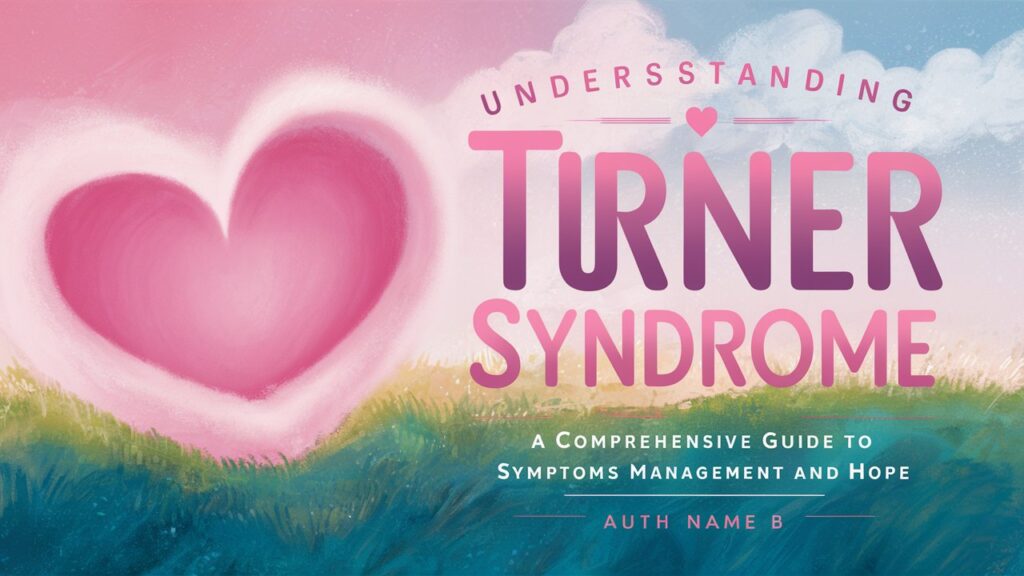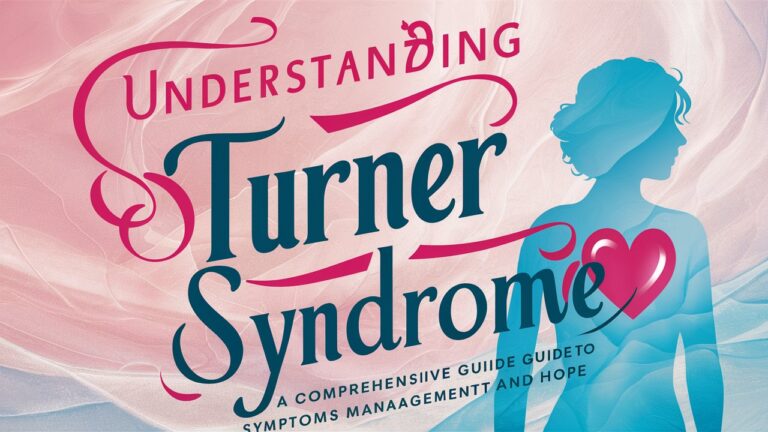Introduction: Decoding a Complex Genetic Condition
Turner syndrome (TS) is a chromosomal disorder affecting approximately 1 in 2,000-2,500 female births worldwide, though its true prevalence may be higher due to undiagnosed cases and pregnancy losses 14. Named after Dr. Henry Turner who first described it in 1938, this condition results from the complete or partial absence of one X chromosome in females, leading to a diverse spectrum of developmental, physical, and medical challenges 39. Unlike many genetic conditions, Turner syndrome occurs randomly and is not typically inherited, making it unpredictable and unrelated to parental age or environmental factors 113. The manifestations vary dramatically among individuals—some display obvious physical characteristics at birth, while others remain undiagnosed until adolescence or adulthood when pubertal delays or infertility concerns arise 26. Despite its complexities, advancements in multidisciplinary care have transformed outcomes, enabling most individuals to lead healthy, independent lives with appropriate management 14.
1. Genetic Causes and Chromosomal Variations
Turner syndrome stems from abnormalities in the X chromosome, one of the two sex chromosomes that determine biological sex. Females typically inherit two X chromosomes (46,XX), but in TS, one X chromosome is either entirely missing, partially deleted, or structurally altered 29. This anomaly disrupts typical development because the X chromosome carries genes essential for ovarian function, growth, and organ maturation. Approximately 50% of cases exhibit classic monosomy X (45,XO), where every cell lacks the second X chromosome due to errors in sperm or egg formation 111. Another 30–40% display mosaicism (45,X/46,XX), where some cells retain a normal chromosome count while others do not; this often results in milder symptoms depending on the proportion of affected cells 39. Structural variants include:
- Isochromosomes: Duplication of one chromosome arm with loss of the other
- Ring Chromosomes: Ends of the chromosome fuse, forming a ring and deleting critical segments
- Xp or Xq Deletions: Partial loss of the short (p) or long (q) arm 39.
Rarely, some individuals have cells with Y chromosome material (45,X/46,XY mosaicism), increasing the risk of gonadoblastoma, a type of ovarian cancer requiring prophylactic gonad removal 13. The SHOX gene, located on the X chromosome, plays a pivotal role in bone growth; its absence contributes to the universal feature of short stature 911.
2. Signs and Symptoms Across the Lifespan
Symptoms of Turner syndrome evolve with age, reflecting cumulative impacts of chromosomal loss on multiple body systems. Recognition varies by life stage:
- Prenatal/Infancy: Prenatal ultrasounds may reveal increased nuchal translucency (fluid at the neck), cystic hygromas (lymphatic sacs), cardiac defects, or kidney malformations 13. Newborns often present with lymphedema (puffy hands/feet), a webbed neck, low-set ears, a broad chest with widely spaced nipples, and micrognathia (receding jaw) 513. Congenital heart defects—particularly bicuspid aortic valves or coarctation (narrowing) of the aorta—occur in 30–50% of infants 36.
- Childhood: The hallmark is proportional short stature, with heights falling below the 5th percentile by age 5 due to skeletal growth impairment 913. Recurrent otitis media (middle ear infections) from anatomical differences may cause conductive hearing loss 16. Learning difficulties, especially in spatial reasoning, mathematics, or executive function, affect 70% despite normal intelligence 13.
- Adolescence/Adulthood: Ovarian insufficiency is near-universal, manifesting as absent breast development, primary amenorrhea (no periods), and infertility due to “streak gonads” (underdeveloped ovaries) 14. Later complications include autoimmune disorders (hypothyroidism, celiac disease), sensorineural hearing loss, hypertension, and osteoporosis 613. Distinctive physical traits include a shield-shaped chest, cubitus valgus (outward-turned elbows), and shortened fourth metacarpals 39.
3. Diagnostic Approaches
Diagnosis relies on integrating clinical features with genetic testing:
- Prenatal Screening: Non-invasive prenatal testing (NIPT) can detect TS via maternal blood samples analyzing fetal DNA. Abnormal findings (e.g., nuchal fluid, heart defects) on routine ultrasound may prompt confirmatory tests like amniocentesis or chorionic villus sampling (CVS), which analyze fetal cells for karyotypic abnormalities 14.
- Postnatal Confirmation: A karyotype analysis of peripheral blood lymphocytes is the gold standard. This test examines chromosome number/structure, identifying 45,X, mosaicism, or structural variants 35. If standard karyotyping is normal but suspicion remains, FISH (fluorescence in situ hybridization) or skin/buccal cell testing can detect mosaicism 3.
After diagnosis, comprehensive evaluation includes:
- Echocardiogram and cardiac MRI to assess aorta and valves
- Renal ultrasound to detect malformations (e.g., horseshoe kidney)
- Audiological and ophthalmological exams
- Hormonal assays (FSH, LH, AMH) to evaluate ovarian function 23.
4. Management and Treatment Strategies
While no cure exists, early interventions address core features and prevent complications:
- Growth Hormone (GH) Therapy: Initiated as early as age 2–5 years, daily GH injections can increase adult height by 7–10 cm (3–4 inches). Combined with oxandrolone (a weak androgen), gains may reach 12 cm, though monitoring for side effects like scoliosis or insulin resistance is essential 139.
- Hormone Replacement Therapy (HRT): Estrogen therapy begins at age 11–12 to induce breast development and uterine growth. Cyclic progesterone is added later to establish menstruation and protect the endometrium. HRT continues until menopause to maintain bone/cardiovascular health 24.
- Fertility Preservation: Spontaneous pregnancy occurs in <5%, but oocyte donation with IVF enables childbearing. Pre-pregnancy cardiac assessment is crucial due to risks of aortic dissection 46.
Table: Multidisciplinary Care Team for Turner Syndrome

| Specialist | Role |
| Endocrinologist | Manages GH, HRT, thyroid disorders, diabetes |
| Cardiologist | Monitors aortic dilation, hypertension, congenital defects |
| ENT/Audiologist | Addresses hearing loss, chronic otitis media |
| Reproductive Specialist | Guides fertility options, IVF, pregnancy care |
| Psychologist | Supports learning disabilities, social skills, mental health |
Supportive care includes annual screenings for thyroid dysfunction, celiac disease, liver/kidney issues, and bone density monitoring 313. Surgical correction may be needed for cardiac defects, webbed necks, or keloid scarring 9.
5. Associated Health Complications
Beyond growth and reproductive issues, TS increases lifelong risks for multisystem disorders:
- Cardiovascular Disease: Up to 50% have congenital heart defects, most concerningly bicuspid aortic valve (BAV) and aortic coarctation. Even after repair, women face elevated risks of aortic dissection (tears in the aorta’s wall), hypertension, and ischemic heart disease. Annual cardiac imaging and aggressive blood pressure control (e.g., beta-blockers) are critical 16.
- Metabolic & Autoimmune Conditions: Type 2 diabetes prevalence triples due to insulin resistance exacerbated by GH therapy. Autoimmune disorders like Hashimoto’s thyroiditis (15–30%), celiac disease (4–6%), and inflammatory bowel disease require regular screening via TSH and tissue transglutaminase antibodies 313.
- Skeletal and Sensory Issues: Osteoporosis from estrogen deficiency necessitates calcium/vitamin D supplementation and weight-bearing exercise. Progressive hearing loss (50–80% of adults) arises from recurrent otitis media and cochlear degeneration, while strabismus and ptosis are common visual concerns 56.
6. Living with Turner Syndrome: Psychosocial and Quality-of-Life Considerations
Navigating TS involves addressing psychosocial impacts alongside medical needs. Parents often experience distress upon diagnosis, necessitating genetic counseling to understand the condition’s randomness and recurrence risks (<1%) 113. Children may struggle with learning differences, particularly in math or spatial tasks, warranting individualized education plans (IEPs) and occupational therapy 24. Adolescents face challenges related to delayed puberty and body image; peer support groups and therapy mitigate isolation and depression risks 46.
Adulthood brings fertility grief and relationship stresses. Counseling helps women process these losses and explore alternatives like adoption or donor eggs. Despite these hurdles, studies show most women with TS attain higher education, employment, and life satisfaction with robust support networks 413. Life expectancy may be reduced by 10–13 years primarily due to cardiovascular complications, but proactive care narrows this gap 69.
Conclusion: Embracing a Holistic Vision of Care
Turner syndrome presents a complex tapestry of medical, developmental, and emotional challenges rooted in a single missing chromosome. Yet, advances in growth hormone therapy, hormone replacement, and cardiac surveillance have revolutionized prognoses, enabling women to achieve near-average heights, experience puberty, and in some cases, bear children via assisted reproduction 14. The cornerstone of management is lifelong multidisciplinary care—integrating endocrinology, cardiology, reproductive medicine, and psychology—to preempt complications and promote well-being 313. Beyond clinical interventions, advocacy organizations like the Turner Syndrome Support Society offer crucial community resources, helping individuals navigate school, relationships, and self-advocacy 4. While TS imposes undeniable burdens, early diagnosis and comprehensive treatment empower women to lead full, independent lives, transforming a once-limiting diagnosis into a manageable journey of resilience and hope.
Frequently Asked Questions (FAQs)
1. Can women with Turner syndrome get pregnant?
Spontaneous pregnancy occurs in only 5–10% of women, primarily those with mosaicism 46. However, most can carry pregnancies using donor eggs combined with IVF. Pre-conception cardiac evaluation is mandatory due to pregnancy-associated risks like aortic dissection 16. Uterine development via estrogen therapy enables successful gestation in many cases 2.
2. Is Turner syndrome inherited?
No, TS is typically a random event during conception or early fetal development. It rarely “runs in families,” and parents of an affected child have a <1% recurrence risk in future pregnancies 113.
3. Does Turner syndrome affect life expectancy?
Historically, life expectancy was reduced by 10–13 years, primarily due to untreated cardiac or vascular issues 6. However, modern interventions—including aortic monitoring, hypertension control, and HRT—have significantly improved longevity, with many women living into their 70s 49.
4. Why is puberty delayed in Turner syndrome?
Over 95% have premature ovarian failure due to underdeveloped “streak gonads,” resulting in insufficient estrogen production 313. Without hormone therapy, breast development and menstruation will not occur spontaneously 2.
5. Can Turner syndrome be diagnosed before birth?
Yes, prenatal ultrasound markers (e.g., nuchal edema, heart defects) may suggest TS, leading to diagnostic testing via amniocentesis or CVS for karyotype analysis 14. NIPT also screens for sex chromosome anomalies but requires confirmation 3.
6. Are there differences in intelligence?
Most have normal cognitive abilities but face specific learning challenges, especially with spatial relationships, mathematics, and executive function. Verbal skills are typically strong, while social difficulties may stem from trouble interpreting nonverbal cues 16. Early educational support optimizes outcomes 4.
